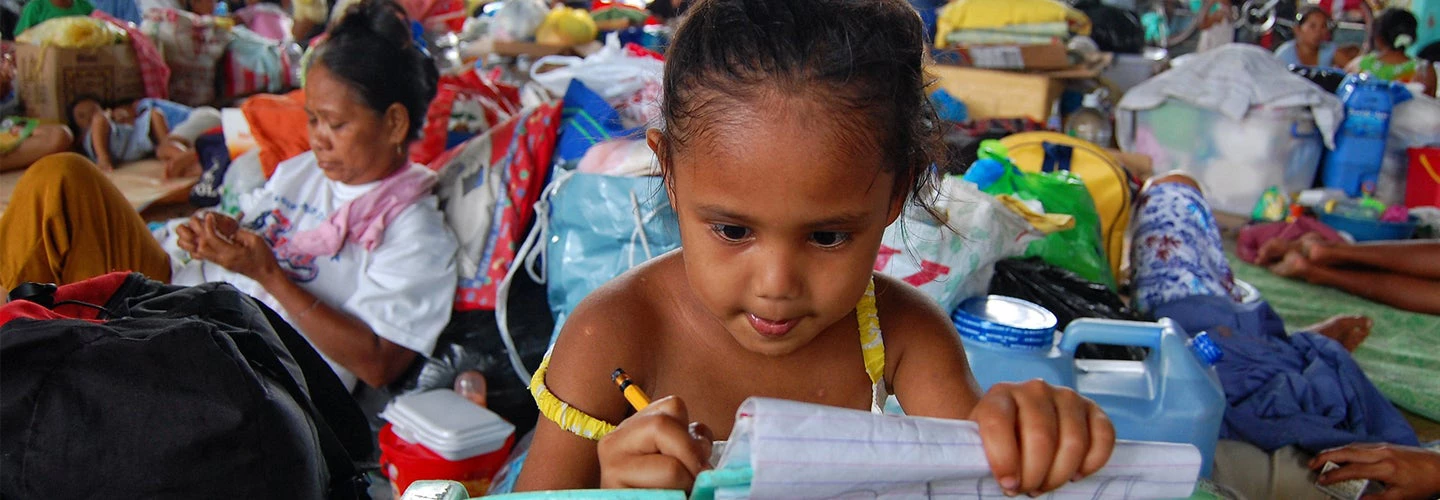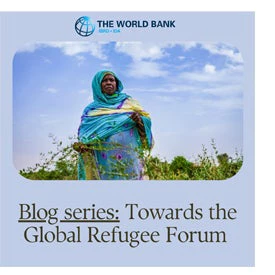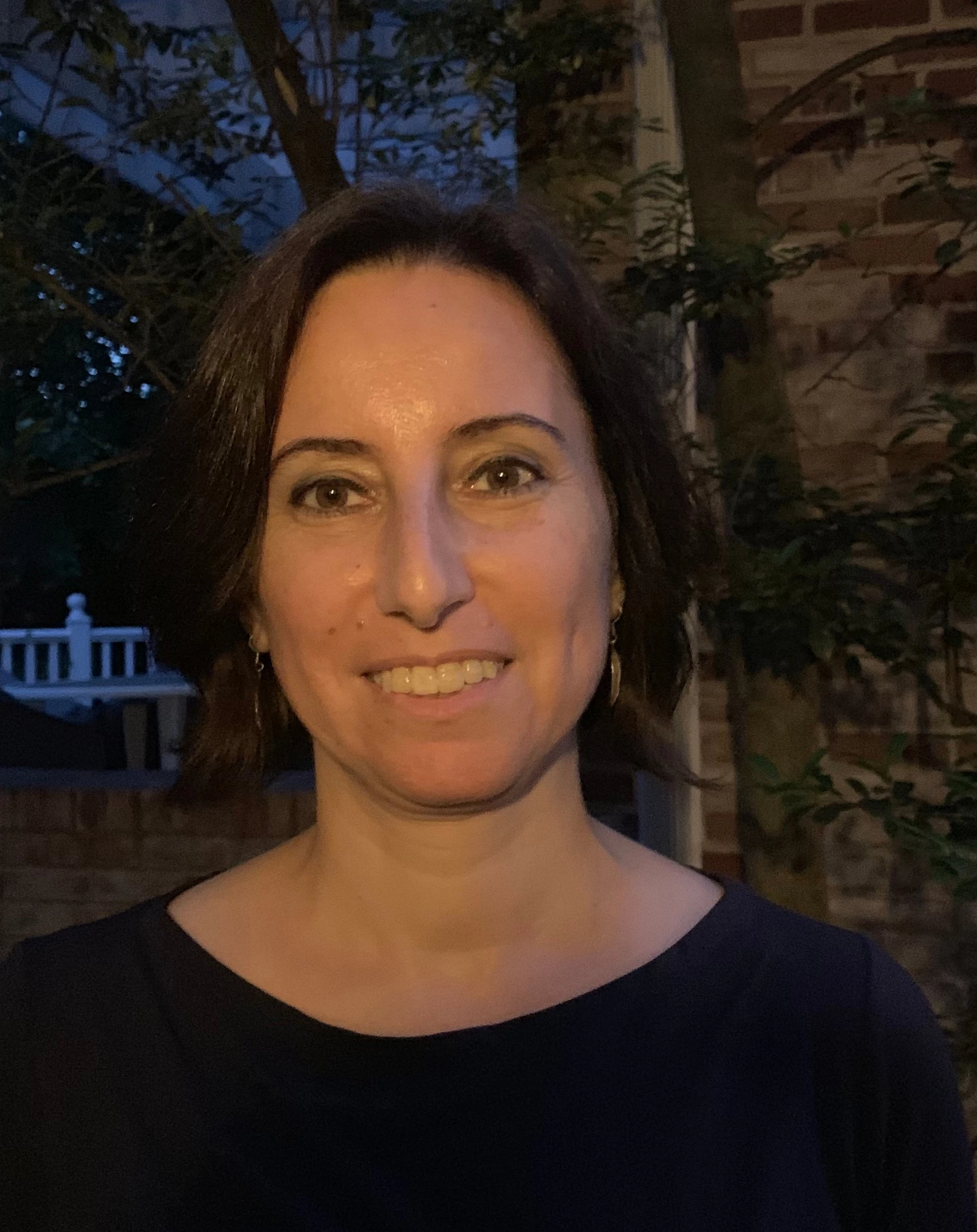 Young girl doing schoolwork in a refugee camp
Young girl doing schoolwork in a refugee camp
About half of the 35 million refugees worldwide are children. They have fled conflict, violence, and persecution, and they are spending their formative years in exile, often in circumstances marred by legal restrictions and discrimination, poverty, trauma, and uncertainty.
Providing these children with education, and especially within the national education system of the host country, is critical to ensure they can realize their potential and seize opportunities later in life. This is because refugee situations tend to last many years, or often decades. A short-term gap in education has lasting consequences, as we all witnessed during the COVID-19 pandemic. Missing several years of schooling, or even missing out on schooling altogether, condemns refugee children to a life of poverty and indignity.
Furthermore, providing refugee children with education is also in the best interest of refugee-hosting countries. This prevents marginalization and the social ills that come with it, and it also facilitates refugees’ economic contributions and self-reliance. It reduces the costs of hosting them, and facilitates their eventual return.
Additionally, it is of paramount importance for countries of origin. Take South Sudan: since independence in 2011, the country has gone through repeated cycles of conflict and violence. Its future depends in large part on decisions the new generation will make. A large share of South Sudanese youth are refugees today: their education is an investment in the future of their country.
When provided with a chance to go to school, refugee children tend to do particularly well, on average. This is because they and their parents have learned the hard way that the one thing that cannot be taken away from them, is one’s education. In 1945, Poland’s borders were redrawn. Those who ended up forcibly displaced as a result fared better than their compatriots at school – and their children and grand-children, too.1 These are dollars well spent.
How do we best do this?
There is an emerging consensus that the approach that has long prevailed of building parallel schooling systems, largely funded by donors on humanitarian budgets, is flawed. Rather, including refugees in national education systems is cheaper, more sustainable, and more conducive to reducing tensions between refugees and host communities. There are situations where such inclusion is not possible, and where parallel systems may be the only option, but they should be the exception rather than the rule.
In fact, high-income countries are already including refugees who are on their territories in their national education systems because they know it is in their interest, and so are upper-middle-income countries. Several countries at much lower levels of income are also following a similar approach, albeit partially. They have indicated they are ready to do more if provided with the necessary funding, including funding to expand schools, strengthen the teaching force, or add language classes. Helping them do so would be a major step forward.
Together with UNHCR, the World Bank has worked with a group of countries – refugee-hosting and donors – to assess the costs of including refugee children in national education systems.2 The way this is done is straightforward. For country X, take the national education budget and the number of (national) children in school; use this to calculate a cost per child. Add 20 percent for refugee children in primary school, and 35 percent for refugee children in secondary school. This is based on experience of the extra costs associated with language, remedial support, etc. at different levels of education. Multiply this “cost per refugee child” by the number of refugee children in the country, and you obtain an estimate. Comparisons with detailed costing plans in several countries have confirmed the soundness of such calculations.
How much would this cost, and how could this be financed?
-
In upper-middle-income countries (e.g., Brazil, Colombia, Peru, Turkiye), refugee children are already included, with the largest share of the costs covered from governments’ budgets and minimal external assistance, except in Turkiye. Yet, these countries’ resources are limited, and as a result a relatively large share of refugee children are out of school, especially at the secondary level. A conversation on responsibility-sharing between host countries and their external partners is needed, at least for a transition period until refugees (who are allowed to work) can become taxpayers themselves.
- There are wide variations across lower-middle-income countries (e.g., Bangladesh, Jordan, Lebanon, Pakistan), in terms of both inclusion in national education systems and external support. In total, the financing gap to include all refugee children in national systems is in the order of $500 million a year for about 2 million refugee children, not including the Islamic Republic of Iran. The challenge is two-fold: to mobilize the resources that are needed, and to ensure they are spent efficiently.
- Finally, for the 2.5 million refugee children living in low-income countries, the total needed stands at $300 million a year, of which around half is already in place. Yet, a large share of this external financing is going to costly parallel systems. In fact, the total amount needed is only about 10 percent of what the international community spends on parallel systems worldwide. In other words, inclusion in national systems is affordable.
In mid-December, the international community will gather in Geneva for the Global Refugee Forum 2023. This is an opportunity to raise our ambitions and to commit the necessary policy steps and financial resources for all refugee children to be included in national education systems. We owe these children a chance: they are the future.
Footnotes
1 Becker, Sascha O., Irena Grosfeld, Pauline Grosjean, Nico Voigtländer, and Ekaterina Zhuravskaya. 2020. "Forced Migration and Human Capital: Evidence from Post-WWII Population Transfers." American Economic Review, 110 (5): 1430-63.DOI: 10.1257/aer.20181518
2 The numbers are based on Global Cost of Inclusive Refugee Education, updated by taking into consideration increased school-aged refugee population (from 7 million to 9 million children) and changes in public education expenditure post COVID. The updated report is forthcoming.





Join the Conversation